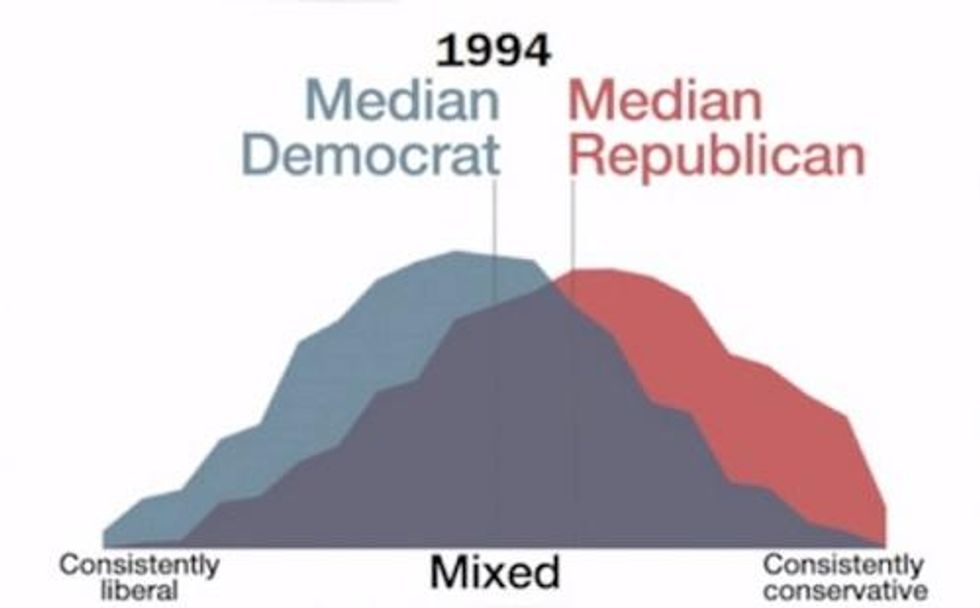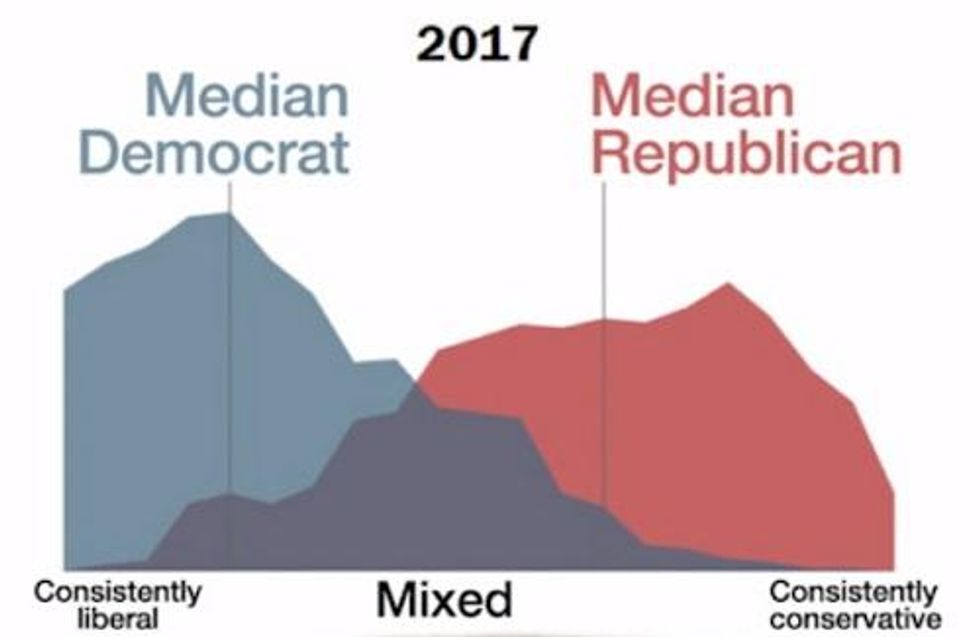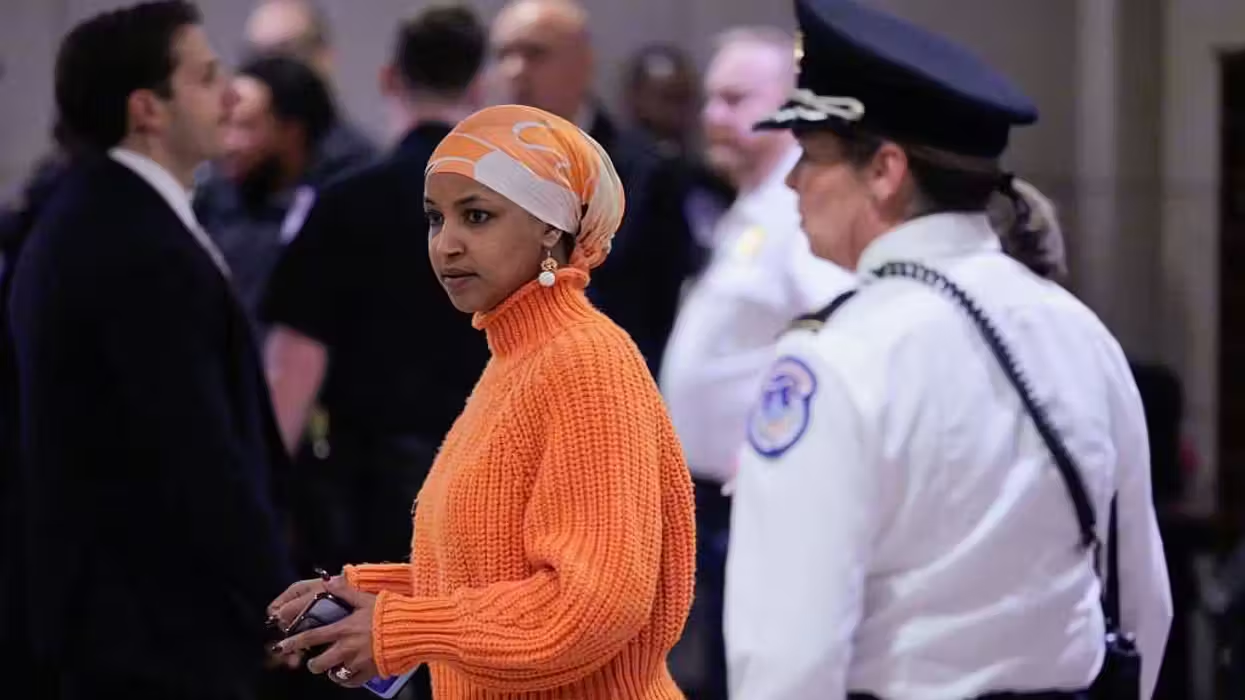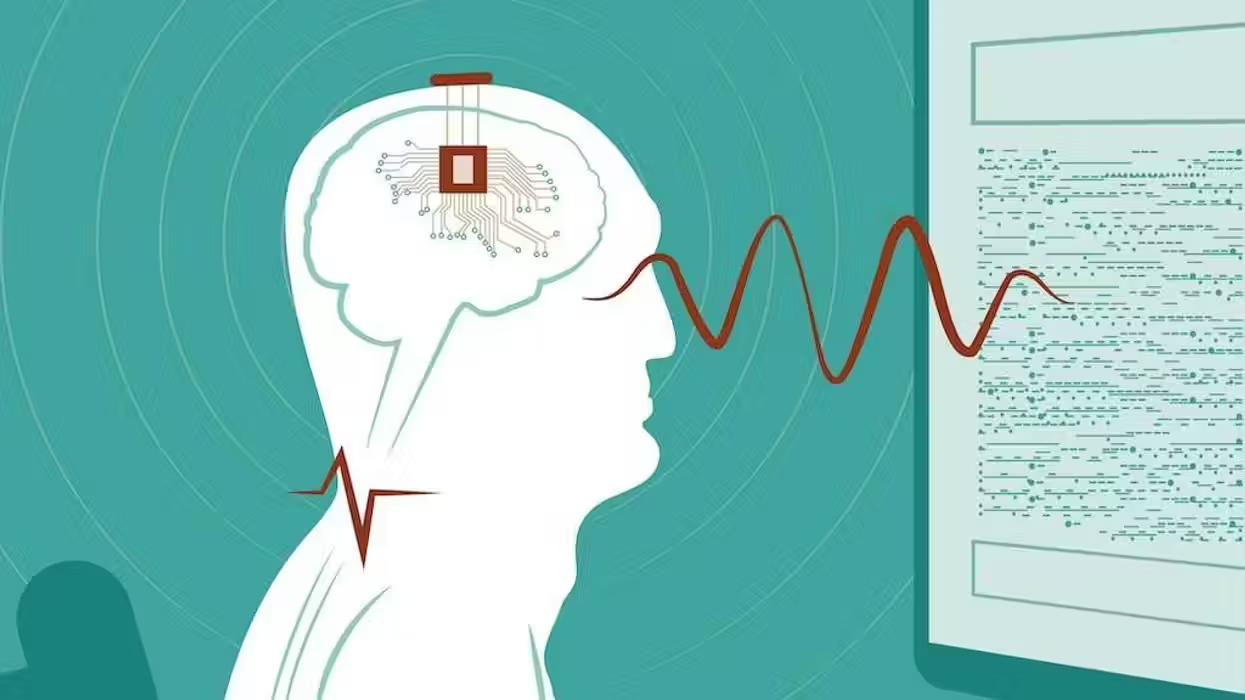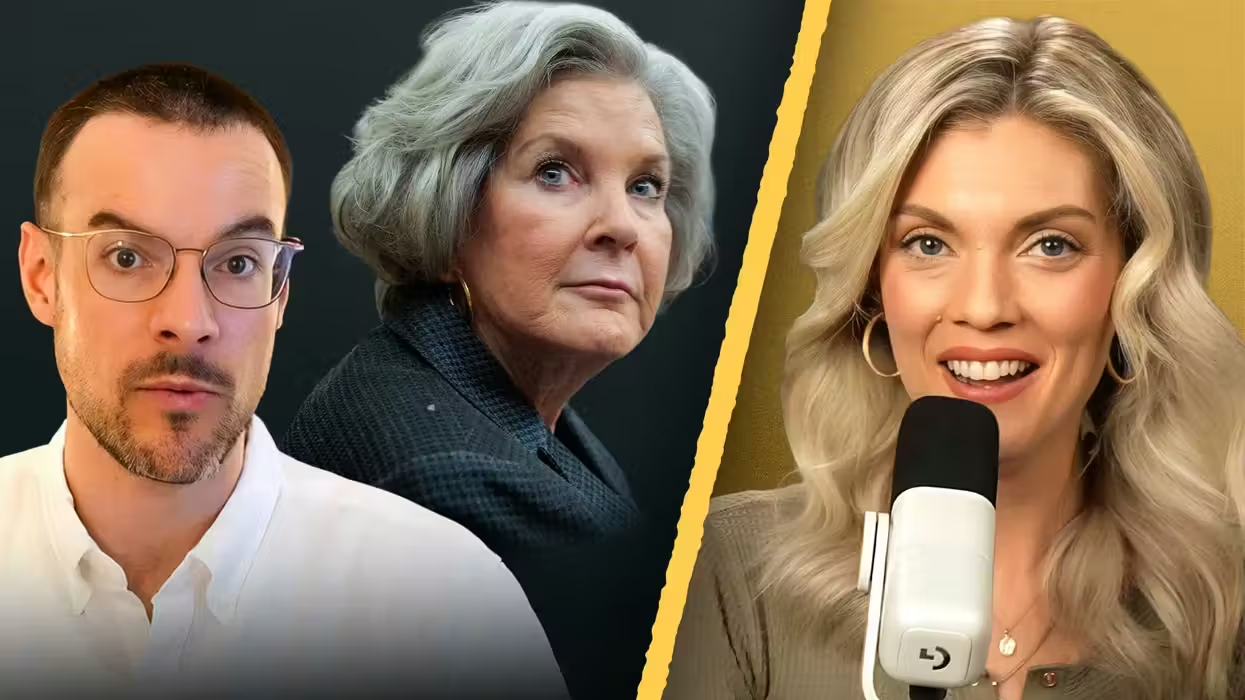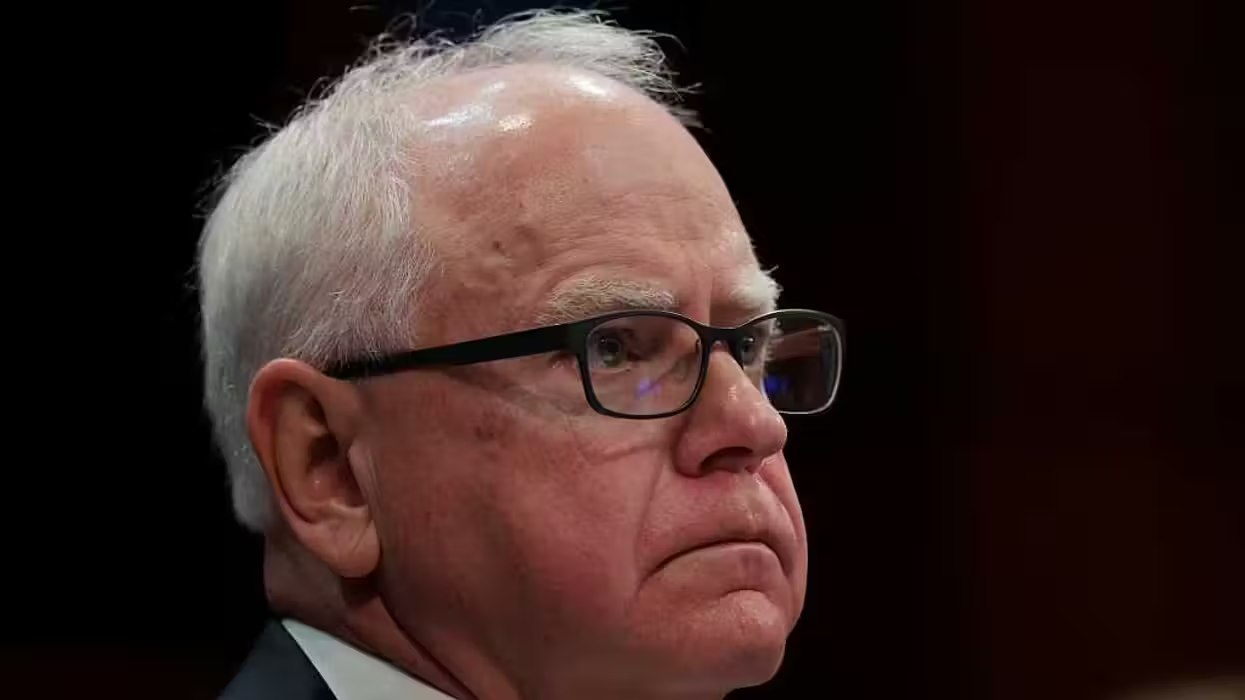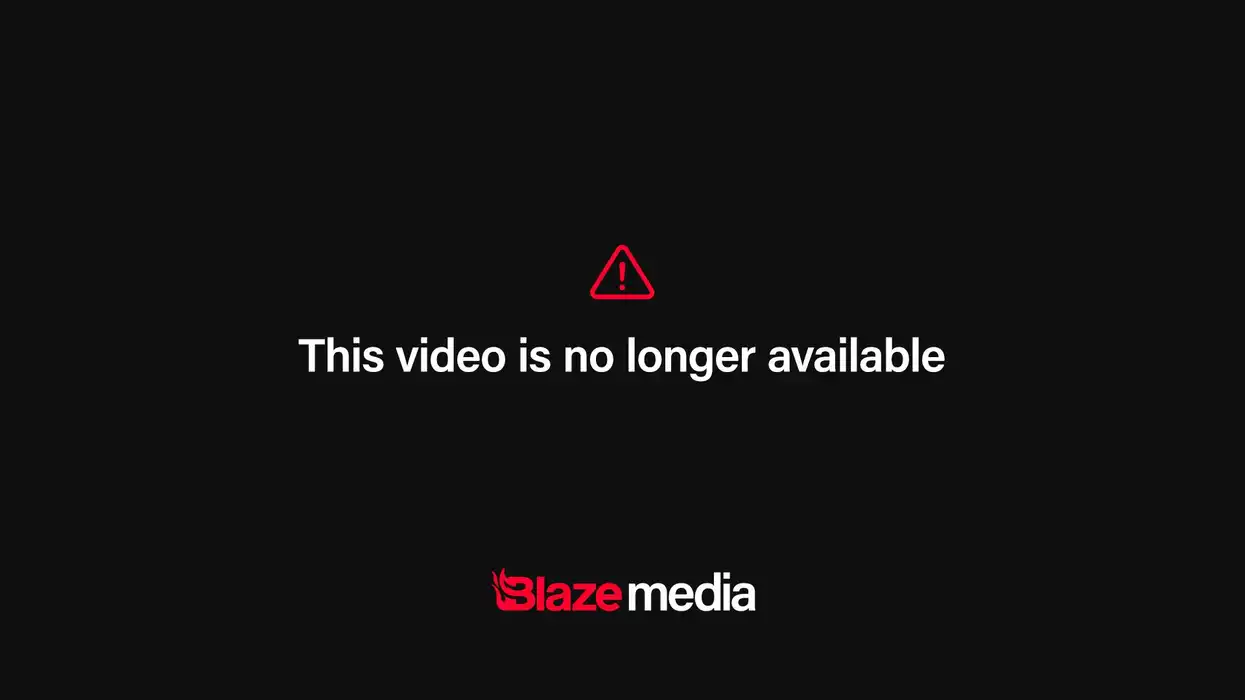
© 2025 Blaze Media LLC. All rights reserved.
TIMELINE: America is more polarized than ever - here's why the political divide keeps getting wider
May 03, 2018
American society has never been as politically divided as it is right now, and the gap between Republicans and Democrats is still getting wider. When it comes to issues like taxes, healthcare, immigration, foreign policy, social justice, and more, each party keeps growing more ideologically homogeneous and less willing to even consider the opposing party's views.
Back in 1994, the division between Democrats and Republicans was far less extreme and individual ideologies had significant overlap.
The average Republican was 70 percent more conservative than the average Democrat. On the flip side, the average Democrat was 70 percent more liberal than the average Republican.
But by 2017, the number of "hard-core" Democrats and Republicans nearly doubled.
The average Republican is now more conservative than 94 percent of Democrats. The average Democrat today is more liberal than 92 percent of Republicans.
"We're not just drifting apart," said Glenn on today's show. "We are now moving to the extreme edge of each spectrum."
So, when did this all start ... and why?
"We are now segregating ourselves into what Pew researchers called 'Ideological Silos.' Technology has played a huge role in this," explained Glenn. "Polarization wasn't that different between 1994 and 2004; something happened in '04 that began to take our society and splinter us apart rapidly."
"The ability to tailor the content that you want to consume created 'silos' where we only hear and see one side of an argument."
The Gulf War, the reelection of President George W. Bush, and Micheal Moore's "Fahrenheit 9/11" were some significant political talking-points in 2009 -- but there was one thing in particular that changed the way we learn, talk and think about our personal political veiwpoints: the advent of social media.
- February 2004 -- Facebook
- March, 2006 -- Twitter
- October, 2010 -- Instagram
- September 2011 -- Snapchat
"The ability to tailor the content that you want to consume had created 'silos' where now we only hear and see one side of an argument," said Glenn.
Watch the video clip above to get Glenn's take on our society's political polarization over the past 20 years.
To see the full episode visit Glenn’s channel on TheBlaze or watch full episodes of “Glenn” live weekdays 5–6 p.m. ET or anytime on-demand at TheBlaze TV.
Not a subscriber? Sign up for a FREE trial here.
Want to leave a tip?
We answer to you. Help keep our content free of advertisers and big tech censorship by leaving a tip today.
Want to join the conversation?
Already a subscriber?
News, opinion, and entertainment for people who love the American way of life.
BlazeTV
BlazeTV Staff
News, opinion, and entertainment for people who love the American way of life.
@BlazeTV →more stories
Sign up for the Blaze newsletter
By signing up, you agree to our Privacy Policy and Terms of Use, and agree to receive content that may sometimes include advertisements. You may opt out at any time.
Related Content
© 2025 Blaze Media LLC. All rights reserved.
Get the stories that matter most delivered directly to your inbox.
By signing up, you agree to our Privacy Policy and Terms of Use, and agree to receive content that may sometimes include advertisements. You may opt out at any time.
